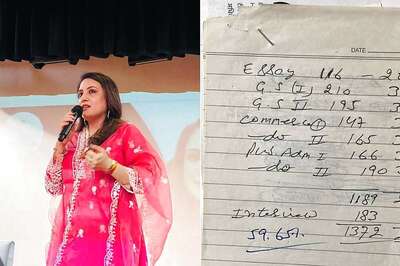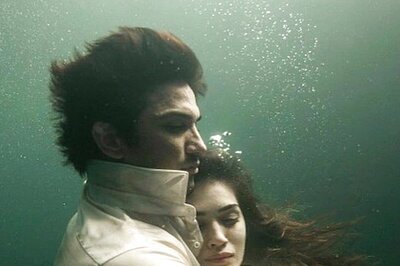
views
Victoria Hospital, the century-old premier medical institute of India and Bangalore’s largest hospital is not only suffering from a crumbling image but also from the disintegration of its old regal structure that has firmly stood for more than 10 decades and would probably continue to if it weren’t for its fate being in the hands of those who just don’t seem to care.The 111-year-old hospital was built by Shri Krishnaraja Wodeyar, the then Maharaja of Mysore, to commemorate the 60th year of queen Victoria’s reign.Two important events coincided with the setting up of the hospital. One was the handing over of Bangalore city to the Mysore Maharaja by the British in 1881 and the other was the plague that hit the city in 1898. The hospital was part of the ongoing development of the city by the Mysore Maharaja, a much needed development especially after the city was hit by the bubonic plague.Though Nanjundaswamy, a literature assistant who worked at the hospital for more than 40 years, says, it was her highness Kempananjammani, the then maharani regent of Mysore whose vision of a better life for the people that lead to the construction of this hospital.Her rationale being- with good health people could achieve more and thus lead a better life. By dedicating the hospital to the queen the Mysore family made sure they had the support of the British. Since the hospital was dedicated to Queen Victoria, everything about it was Victorian, including the architecture, except what it stood for the welfare of the people. The design and architecture of the hospital is credited to a British engineer Joly de Lotbiniere who was a member of the Royal Engineers (RE).The hospital was inaugurated on December 8, 1900 by Lord Curzon the then Viceroy of India. It was run by doctors who studied in the UK and treated everyone starting from the royals (Mysore Maharaja) to the poor. Victoria hospital that was built at a cost of `6 lakh has now seen an addition of modern buildings catering to different treatments, but the old building stands out. It is of Victorian architecture that was employed during the middle and late 19th century, as per the British custom of naming architectural styles on the reigning. Indian Council of Historical Research Assistant Director SK Aruni says that, looking at the stones that make up the hospital and those of Bangalore fort one can safely assume that when the fort was partially dismantled in 1870 to form Chamrajpet, stones from the fort were used to build the hospital. The most prominent elements in this stone structure are columns, decorative steep tiled roof, high ceilings, arched doors and windows.The building that one sees now is a mixture of the old and new.The Victorian architecture can be seen in the tiles in the first floor that were brought in from England, the rickety, creaking staircase with iron railings, parts of the ceiling decorated with vintage rose motifs in silver, placed in octagonal sections painted green and the most noteworthy of all — a huge portrait of Queen Victoria that hangs in the first floor lobby and Royal coat of arms (emblem) that can be seen on the exterior wall of the building. It is clearly a British body with an Indian soul.The main building and a small burns unit next to it are the only two Victorian-style buildings that are still standing strong out of many others around it that have been, over the years, razed to the ground despite opposition, to make way for modern buildings.Heritage sacrificed in the name of development?Suggestions to rename the hospital after the actual queen behind it, the Mysore Maharani were thwarted by government officials. Apparently they didn’t want to confuse the public. Buried under renovations, the old Victoria, which has been one of the buildings that represent the dawn of Bangalore is sadly standing on the brink of its own dusk.



















Comments
0 comment